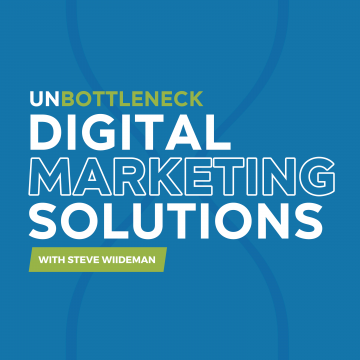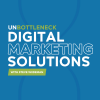Podcast: Play in new window | Download
In this episode of the Unbottleneck podcast, another virtual trip is underway as Steve is joined by leading email marketing consultant, Tim Watson from England! Dive into best email practices and learn more about the Entrepreneurial Operating System (EOS).
About Our Guest: Tim Watson
As the founder of Zettasphere, Watson has specialized in email marketing for nearly 15 years and is passionate about helping businesses meet their objectives through the power of email. Watson has served twice as an elected member on the email council of the Data & Marketing Association. As Founder of Traction Six, he also focuses on EOS implementation and helping entrepreneurs.
Watson is eager to share his best email practices for organizations 2021.
Sponsored by Ryte
Featured in this episode:
- The Foundation of Email Marketing
- 2021 Email Marketing Best Practices
- How to Grow Your Email List
- Implementing the Entrepreneurial Operating System (EOS)
What is Email Marketing?
Simply put, email marketing is sending communication by email to support the objectives of an organization. We are all recipients of these emails. We get these emails from organizations that prompt us to take various actions such as:
- Give feedback on a recent purchase
- Join a social movement
- Buy a product
- Give a donation
The Email Inbox: Personal Space Please!
For a small business, email marketing is an important tool to help achieve your objectives. But before you hit the send button, there are a few things you must know to set yourself up for success.
You must understand that an email’s inbox is a very personal space that you should not enter into lightly and without a purpose. Because email is so personal, people tend to get offended quickly if you violate that space. If you clutter someone’s inbox with spam or irrelevant information, you can find yourself in trouble. If too many people classify your emails as spam, any future emails you send will automatically go into the spam folder.
Therefore, your emails must be customer-focused in order to get the best conversion.
2021 Email Marketing Best Practices
In 2020, the COVID-19 pandemic shifted the priorities of businesses everywhere. With a global shutdown, email marketing was king as it served as an intimate form of communication for businesses to practice empathy and transparency with their customers.
In 2021, the formula for email success will come from mastering the science of sending the right message to the right person at the right time.
The Right Message
Stay Organized. Segmentation will be your best friend as you craft your emails. In order to send the right message, you will need to organize your contacts based on factors such as purchases, interests, preferences, location, etc. This will help you send more targeted emails.
The Right Person
Be Human. Your emails should sound like a real person by showing character in the verbiage you use. In order to do this, you must understand who your target audience is and speak to them in the manner in which they want to be spoken to.
The Right Time
Give Value. Focus on the recipient – What do they need? What are they experiencing? How can your organization be of value to them? During the initial phase of the COVID-19 pandemic, businesses centered their email marketing strategy around safety to make customers feel confident enough to continue to shop or dine at their establishments (contactless delivery, social distancing, wearing masks, etc.).
Subject Lines
Subject lines are tricky because they give a first impression of your email. Even if recipients do not open the email, the subject line still sends a message.
Here are a few formulas you can use to craft a witty subject line:
- Short phrase
- Long phrase
- Ask a question
- Personalization (Include their name)
- Fear of missing out (FOMO)
- Add emojis
- Create urgency
In order to get a feel for what works for your particular audience, you will need to switch it up and use different formulas and measure the response rate.
Pro-Tip: If you are a small business, create another email account and use it for the sole purpose of signing up for your competitor’s email list. You will be able to see how they are conducting their email marketing campaigns and this can serve as a guide on what to do (or not do) when you start your own email campaign.
How to Grow an Email List
The best email lists are built on permission-based opt-ins. You want to curate an email list with people who have a genuine interest in who you are and what you do.
Here are a couple strategies for users to opt-in:
- Pop-ups are a great way for users to opt-in to your email list because they typically include an offer for new subscribers such as “20% off” or “free shipping”.
- Gated content is a key lead generation tool that requires a user to complete an email form before gaining full access to valuable content. An example of this type of content can be a downloaded checklist.
Pro-Tip: Never buy an email list! You do not want to show up in someone’s inbox unsolicited. Additionally, the recipient’s on that list are not your customers so you will not be speaking to the right people.
The Best Email Marketing Platform
The Verdict is in: According to Watson, the best email marketing platform for small businesses is Mailchimp, based on value for money and user experience.
Keep up with the best digital marketing and email marketing essentials. Follow Steve on LinkedIn!




